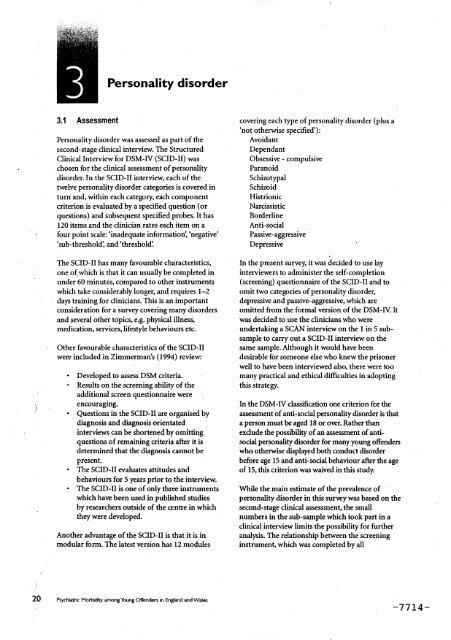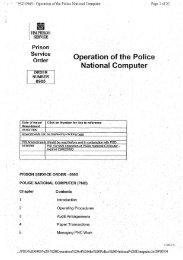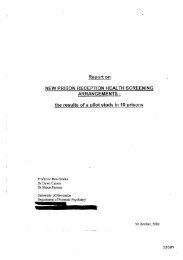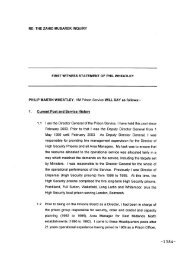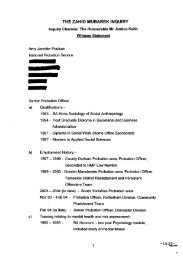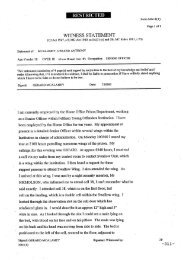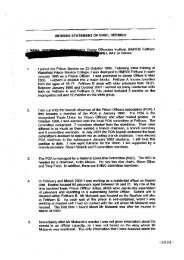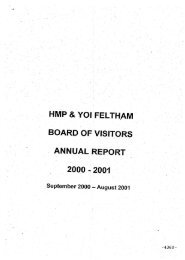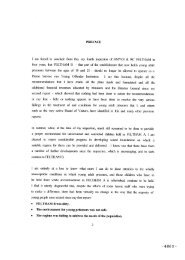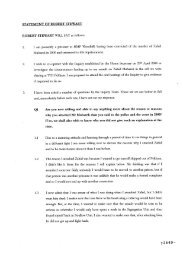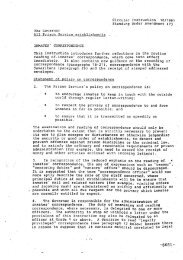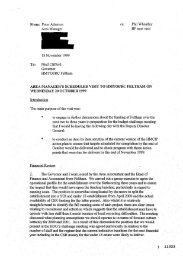Neurotic disorders
Neurotic disorders
Neurotic disorders
You also want an ePaper? Increase the reach of your titles
YUMPU automatically turns print PDFs into web optimized ePapers that Google loves.
Personality disorder<br />
3.1 Assessment covering each type of personality disorder (plus a<br />
'not otherwise specified'):<br />
Personality disorder was assessed as part of the Avoidant<br />
second-stage clinical interview. The Structured Dependant<br />
Clinical Interview for DSM-IV (SCID-II) was Obsessive - compulsive<br />
chosen for the clinical assessment of personality Paranoid<br />
disorder. In the SCID-II interview, each of the Schizotypal<br />
twelve personality disorder categories is covered in Schizoid<br />
turn and, within each category, each component Histrionic<br />
criterion is evaluated by a specified question (or Narcissistic<br />
questions) and subsequent specified probes. It has Borderline<br />
120 items and the clinician rates each item on a Anti-social<br />
i four point scale: 'inadequate information; 'negative' Passive-aggressive<br />
'sub-threshold', and 'threshold'. Depressive<br />
The SCID-II has many favourable characteristics, In the present survey, it was decided to use lay<br />
one of which is that it can usually be completed in interviewers to administer the self-completion<br />
under 60 minutes, compared to other instruments (screening) questionnaire of the SCiD-II and to<br />
which take considerably longer, and requires 1-2 omit two categories of personality disorder,<br />
days training for dinicians. This is an important depressive and passive-aggressive, which are<br />
consideration for a survey covering many <strong>disorders</strong> omitted from the formal version of the DSM-IV. It<br />
and several other topics, e.g. physical illness,<br />
was decided to use the clinicians who were<br />
medication, Services, lifestyle behaviours etc. undertaking a SCAN interview on the I in 5 subsample<br />
to carry out a SCID-II interview on the<br />
Other favourable characteristics of the SCID-II same sample. Although it would have been<br />
were included in Zimmerman's (1994) review:, desirable for someone else who knew the prisoner<br />
well to have been interviewed also, there were too<br />
• Developed to assess DSM criteria, many practical and ethical difficulties in adopting<br />
• Results on the screening ability of the this strategy.<br />
additional screen questionnaire were<br />
•,) encouraging. In the DSM-IV classification one criterion for the<br />
• Questions in the SCID-II are organised by assessment of anti-social personality disorder is that<br />
diagnosis and diagnosis orientated<br />
a person must be aged 18 or over. Rather than<br />
interviews can be shortened by omitting<br />
exdude the possibility of an assessment of antiquestions<br />
of remaining criteria after it is social personality disorder for many young offenders<br />
determined that the diagnosis cannot be who otherwise displayed both conduct disorder<br />
present, before age 15 and anti-social behaviour after the age<br />
• The SCID-II evaluates attitudes and of 15, this criterion was waived in this study.<br />
behaviours for 5 years prior to the interview.<br />
, The SCID-II is one of only three instruments While the main estimate of the prevalence of<br />
which have been used in published studies personality disorder in this survey was based on the<br />
by researchers outside of the centre in which second-stage clinical assessment, the small<br />
they were developed, numbers in the sub-sample which took part in a<br />
clinical interview limits the possibility for further<br />
Another advantage of the SCID-II is that it is in analysis. The relationship between the screening<br />
modular form. The latest version has 12 modules instrument, which was completed by all<br />
20 PsychiatricMorbidity amongYoungOffenders in EnglandandWales<br />
-7714-


